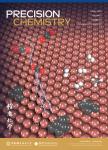Prospects for Tin-Containing Halide Perovskite Photovoltaics
作者机构:the Department of ChemistryGraduate School of Science of Kyoto University in Japan the Department of PhysicsUniversity of OxfordOxfordUK the Institute for Chemical Research of Kyoto University in Japan
出 版 物:《Precision Chemistry》 (精准化学(英文))
年 卷 期:2023年第1卷第2期
页 面:69-82页
学科分类:081704[工学-应用化学] 07[理学] 08[工学] 0817[工学-化学工程与技术] 0703[理学-化学] 070301[理学-无机化学]
基 金:supported by JST-Mirai Program(JPMJMI22E2),NEDO,International Collaborative Research Program of ICR,Kyoto University,JSPS for a Research Fellowship for Young Scientists(21J14762) the China Scholarship Council(CSC) the UK Engineering and Physical Sciences Research Council(EPSRC)under projects EP/V027131/1 and EP/S516119/1 and the US Office of Naval Research(ONR)under award number N00014-20-1-2587
主 题:solar cell perovskite tin crystallization surface chemistry defect passivation carrier dynamic
摘 要:Tin-containing metal halide perovskites have enormous potential as photovoltaics,both in narrow band gap mixed tin−lead materials for all-perovskite tandems and for lead-free *** introduction of Sn(II),however,has significant effects on the solution chemistry,crystallization,defect states,and other material properties in halide *** this perspective,we summarize the main hurdles for tin-containing perovskites and highlight successful attempts made by the community to overcome *** discuss important research directions for the development of these materials and propose some approaches to achieve a unified understanding of Sn *** particularly focus on the discussion of charge carrier dynamics and nonradiative losses at the interfaces between perovskite and charge extraction layers in p-i-n *** hope these insights will aid the community to accelerate the development of high-performance,stable single-junction tincontaining perovskite solar cells and all-perovskite tandems.



